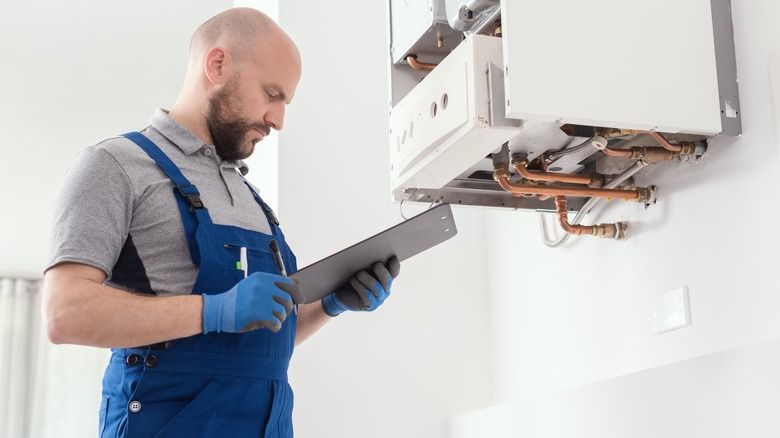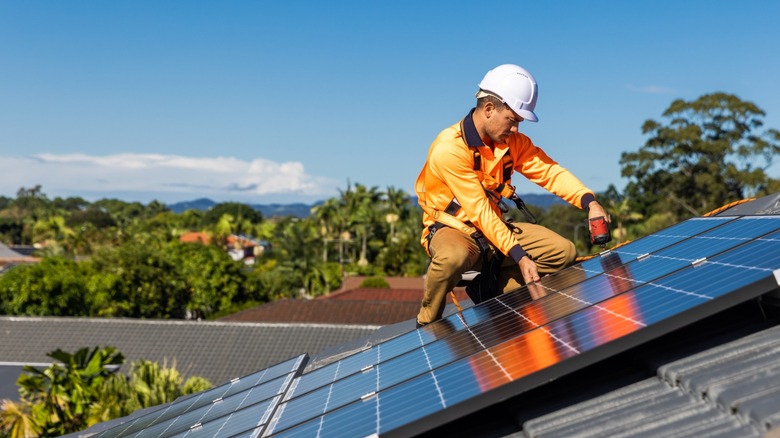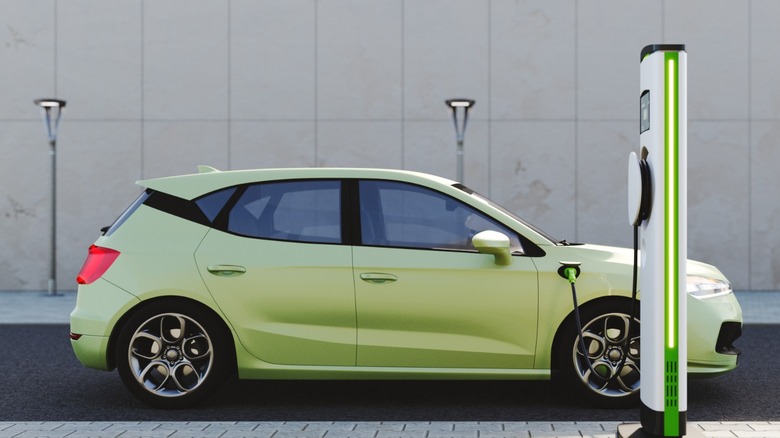Savvy Homeowners Are Taking Advantage Of The Inflation Reduction Act, Here's How
The Inflation Reduction Act is designed to help consumers take advantage of the $369 billion available in tax credits and rebates, most good through at least 2032. A large part of the bill encourages clean energy usage with monetary incentives. It's a much-needed bit of relief for the American people, with inflation at an unprecedented high. But if you're like most people, you have no idea where to begin this journey.
The first step is getting a home energy audit with a professional who can help you assess your situation. You can visit Energy.gov to help find one near you. This person will determine the weak points in your home's energy efficiency and identify the best rebates for you to take advantage of. The best part of this is you'll get a $150 tax credit per household just for doing it. Remember to always save and keep your receipts organized by dates so you can easily find them at tax time. Each person is eligible for more than $10,000 in credits and rebates, which means savvy homeowners are cashing in.
Go solar and sustainable
One great way to take advantage of tax credits is through going solar. Have you always wanted to invest in solar panels but never had the money? Well, now's your chance since the average cost has gone down to about $20,000, and the IRA is offering 30% back on all costs associated with the purchase and installation of a new system. There's no limit on how much you can spend, and it's good from January 2022 through December 2032. This is good for solar, wind, or geothermal systems which produce heat or electricity. It's also good for the labor costs to install them, the costs of permits and inspections, and stand-alone batteries with more than 3 kilowatt hours of storage.
You can also opt for smaller upgrades that support better energy efficiency inside your home. Homeowners can receive 30% back or up to $1,200 per year for things like adding insulation, putting storm windows in, and purchasing energy-efficient appliances. This used to be capped at $500 max for a lifetime, so this is a hefty renewal. This tax credit started January 2023 and is good through 2032. There are also a ton of rebates to help with initial costs.
Get an electric vehicle
Of course, now is the time to purchase an EV. If you've had your eye on one for a while, but you just haven't been able to swing it, take advantage while you can. The current rebate offered has been renewed, and then some. If you want to buy a new electric vehicle, you can get up to $7,500 back. In fact, starting in 2024, you'll be able to transfer the credit to a dealer for an immediate discount on a purchase. Not only that, but the credit now extends to used EVs as well, for 30% or up to $4,000 back.
Additionally, you can get up to 30% of the cost back to install a charging station for your EV at home. The only catch to these incentives is that the EV needs to be at least assembled in this country to cash in fully. Otherwise, if the criteria aren't met, you can still get up to $3,750 back. You can search for qualifying vehicles and get all the details by visiting the EPA website. The credits are good through 2032, but there are also income requirements for each, vehicle price caps, and some other details you should look into first. Other than this, there are programs set up for low to medium-income families worth checking out. Keep these things in mind in the future when making purchases that may improve energy efficiency.


